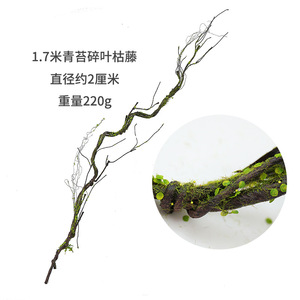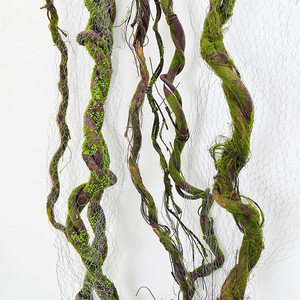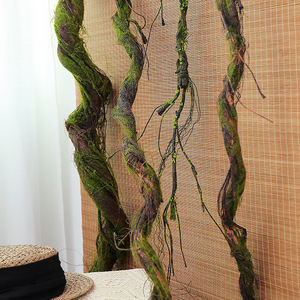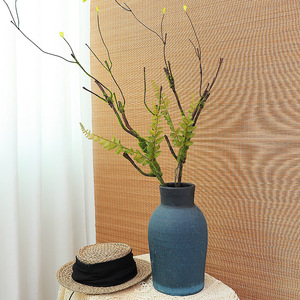(2075 products available)
































































































































































































































Artificial tree bark is a synthetic material designed to mimic the appearance and texture of natural tree bark. It is often used in landscaping, architecture, and interior design. Artificial tree barks are typically made from materials like fiberglass, polyurethane, or cement, and they come in various styles and finishes to suit different aesthetic preferences. They offer a durable and low-maintenance alternative to real tree bark, making them popular for creating naturalistic environments or adding a rustic touch to urban spaces. The types of artificial tree barks can be classified into the following categories:
Polyurethane tree bark
Polyurethane tree bark is very popular among users. It is made from high-quality polyurethane, which is very light in weight and durable. This type of tree bark has a good-looking appearance and offers a smooth touch. It is a popular choice for wall decoration, such as in shopping malls, hotels, and restaurants. This artificial tree bark is easy to install and maintain. Another advantage is that it is fire-resistant and waterproof.
Cement and glass fiber tree bark
This type of tree bark is made from cement and glass fiber, so it is heavy and solid. It is very suitable for outdoor use. Moreover, it is resistant to bad weather and UV rays. It can be used as an external wall covering or as tree wraps in parks or public spaces.
Expanded polystyrene with acrylic coating tree bark
This type of tree bark is made from expanded polystyrene. It has an acrylic coating, making it lightweight and impact-resistant. This type of artificial tree bark is primarily used for wall decoration and tree wraps. It can be used indoors or outdoors.
High-density polyethylene tree bark
This artificial tree bark is made from high-density polyethylene. It is known for its durability and resistance to chemicals. This type of tree bark is often used in landscaping and for making artificial trees. It is very easy to clean and maintain.
Vinyl-coated fiberglass tree bark
This type of tree bark is made from vinyl-coated fiberglass, which is very durable and resistant to moisture. It is primarily used as decorative wall coverings and can be installed easily.
The design of artificial tree barks is a mix of technical and creative processes. They ensure that each piece looks real and serves its purpose well. These barks are not just replicas of trees but are designed with a lot of precision and artistry.
Designing artificial tree barks needs a mix of skills. These include artistic skills, technical know-how, and an understanding of materials. The designers work hard to ensure that the tree barks are safe, strong, and realistic. They are great for decorating and creating themed spaces.
Artificial tree barks are often used in theme parks, zoos, museums, and other public spaces. They can be used to create a more immersive environment in which visitors can learn about different habitats and ecosystems. For example, a safari park may use fake tree barks to make animal enclosures look more like African savannahs.
Artificial tree barks are often used in commercial spaces. Hotels, restaurants, and retail stores can add a naturalistic touch to their interiors. A restaurant might use fake tree barks on its walls to create a rustic farmhouse look. A hotel could use them in its lobby to give guests the impression that they are walking through a peaceful forest.
Artificial tree barks have many uses outside commercial spaces. They are commonly used in residential gardens and landscaping projects. People can use them as decorative elements or to create focal points. Gardeners can use fake tree barks to make it appear as if they have an old, gnarled oak tree growing somewhere in their backyard. Landscapers might use large pieces of artificial bark to add texture and interest to rockeries or other garden features. Fake tree barks are also popular as wall cladding material. Homeowners and business owners can use them to create feature walls that look like they have real tree barks.
Artificial tree barks are often used in theatrical productions, film sets, and other performance arts. They can be used to create realistic forest or woodland scenes on stage or screen. With artificial tree barks, set designers can build fake trees and add realistic-looking bark textures. The textured panels can then be painted or treated to match the look of real tree barks.
Artificial tree barks are also used in educational institutions and research facilities. They are often used in biology and environmental science classrooms as teaching aids. Teachers can use artificial tree barks to demonstrate the structure and function of different types of trees. Researchers might use them to study how plants and animals interact with their habitats.
When choosing artificial tree bark, consider the following factors.
Purpose and Application:
Determine the purpose of the artificial tree bark. Is it for interior decoration, exterior landscaping, or special effects? The purpose will dictate the type of bark you need. For indoor use, look for realistic finishes that suit your decor. For outdoor use, choose durable barks that can withstand the elements.
Material and Durability:
Artificial tree barks are made from materials like polyurethane, fiberglass, or polystyrene. Polyurethane barks are lightweight and flexible, while fiberglass offers strength and durability. Consider the material's longevity, especially if the bark is used outdoors.
Realism and Texture:
Look for barks with detailed textures and realistic color variations. Some manufacturers use molds from real tree barks to create their products. Check photos or samples to ensure the realism meets your standards.
Installation:
Consider how easy the bark is to install. Some come in large sheets that require special adhesive, while others are in 3D panels. Ensure you have the right tools and materials for installation.
Maintenance:
Artificial tree barks should be easy to clean and maintain. Check if they are UV-protected to prevent color fading in sunlight.
Fire Rating:
Check local building codes for fire safety standards. Many artificial barks have a fire-retardant treatment. Ensure your choice meets the regulations.
Cost:
Get quotes from suppliers. Consider the cost of the bark and the installation and maintenance expenses.
Supplier Reputation:
Choose a reputable supplier with positive reviews. They should offer good customer service and support.
Q1: Can fake tree bark be used outdoors?
A1: Yes, artificial tree barks are UV resistant and can be used in outdoor applications.
Q2: Can customers get a sample before placing an order?
A2: Yes, customers can ask for samples to check the quality before ordering.
Q3: What are the artificial tree barks made of?
A3: They are usually made from high-quality materials like polyurethane and fiberglass.
Q4: How should artificial tree bark be installed?
A4: Tree barks should be glued together using a strong adhesive and joined using a special glue.
Q5: How can people clean artificial tree barks?
A5: They should be cleaned using a damp cloth and mild soap. Brushes should not be used, as they can damage the surface.